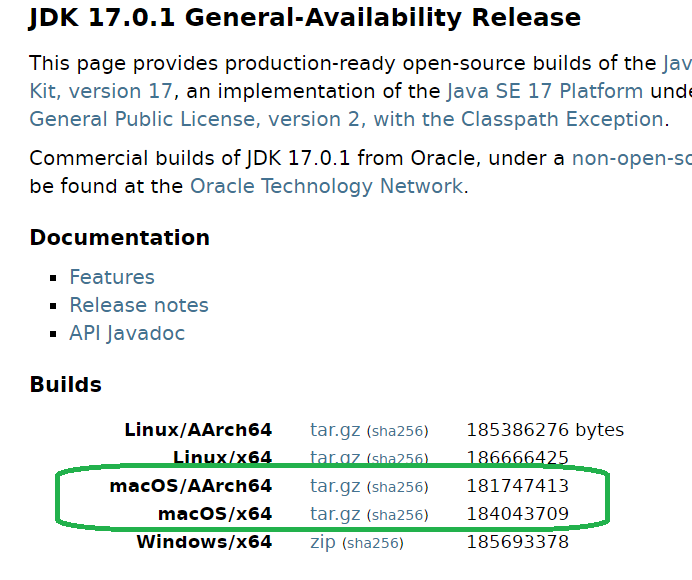Download and Install OpenJDK 17 on macOS
- Details
- Written by Nam Ha Minh
- Last Updated on 11 January 2022 | Print Email
1. Download binary distribution of OpenJDK 17 for macOS
Visit the official download page of OpenJDK 17 at https://jdk.java.net/17, and click on the download link for macOS/x64 if your computer running on Intel’s CPU, or choose macOS/AArch64 for Apple’s CPU: It’s strongly recommend to verify SHA256 checksum of the downloaded file against the value published on the website (click the corresponding link sha256). Then open a new terminal window, and type the following command: shasum -a 256 openjdk-xxx.tar.gzCompare the checksum value printed by the shasum command with the value published by the website. If both are identical, you can safely install the archive file.Then extract the downloaded file .tar.gz to a directory on your computer, either using context menu provided by macOS (right click on the file, Open with > Archive Utility) or using the following command in a terminal session:
It’s strongly recommend to verify SHA256 checksum of the downloaded file against the value published on the website (click the corresponding link sha256). Then open a new terminal window, and type the following command: shasum -a 256 openjdk-xxx.tar.gzCompare the checksum value printed by the shasum command with the value published by the website. If both are identical, you can safely install the archive file.Then extract the downloaded file .tar.gz to a directory on your computer, either using context menu provided by macOS (right click on the file, Open with > Archive Utility) or using the following command in a terminal session:
2. Install OpenJDK 17 on macOS
Next, you need to set JAVA_HOME and update PATH environment variables so other Java programs and tools could find JDK. In the terminal, type the following command to create the Z-Shell resource file:cat > .zshrc
export JAVA_HOME=$HOME/jdk-17.0.1.jdk/Contents/Home
export PATH=$JAVA_HOME/bin:$PATH
Press Control + D to save the file. The .zshrc file is run whenever a new terminal session is initialized, which sets JAVA_HOME and update PATH environment variables.NOTE: If you’re using Bash shell, create the .bash_profile file instead of .zshrc file.Quit the terminal and start a new session. Then type java -version command, you should see the following output: That means you have successfully installed OpenJDK on your Mac. To see the steps in action, watch the following video:
That means you have successfully installed OpenJDK on your Mac. To see the steps in action, watch the following video: Related Articles:
- How to set JAVA_HOME in macOS and Linux permanently
- How to set JAVA_HOME environment variable on Windows 10
- What are JVM, JRE and JDK
- How to write, compile and run a hello world Java program for beginners
- Java Core Language Tutorials
About the Author:
 Nam Ha Minh is certified Java programmer (SCJP and SCWCD). He began programming with Java back in the days of Java 1.4 and has been passionate about it ever since. You can connect with him on Facebook and watch his Java videos on YouTube.
Nam Ha Minh is certified Java programmer (SCJP and SCWCD). He began programming with Java back in the days of Java 1.4 and has been passionate about it ever since. You can connect with him on Facebook and watch his Java videos on YouTube.